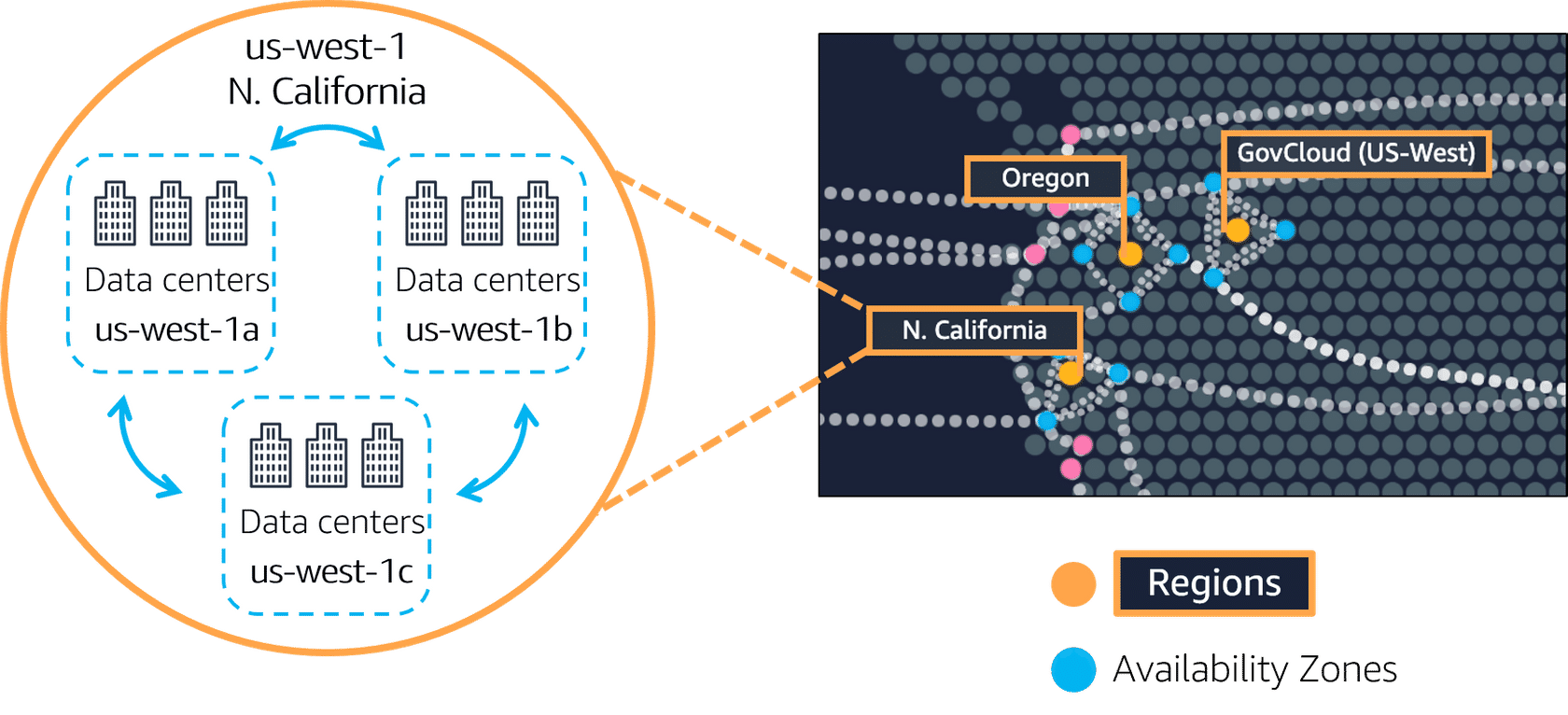AWS Cloud Availability Zones
Introduction to Availability Zones
Availability Zone is a single Data Center or a group of Data Centers in a region.
In an Availability Zone the Data Centers are located many miles apart from each other.
Having them apart reduces the risk of them all going down if a disaster happens in the region.
Simultaneously, have the Data Center(s) close enough to have low latency.
AWS Availability Zones Video
W3schools.com collaborates with Amazon Web Services to deliver digital training content to our students.
Availability Zones Illustration
This picture illustrates how the Availability Zones works:
Three regions (orange circles): N. California, Oregon, GovCloud(US-West).
The regions have availability zones (blue circles) displayed as a grid around them.
The picture zooms in on the N. California region.
N. California has an availability zone of three groupings of Data Centers: US-West-1A, US-West-1B, and US-West-1C.

Image created by Amazon Web Services
The Availability Zones setup makes the cloud services robust.
AWS Cloud Exercises
Nicely done! In the next chapter, you will learn about Edge Locations.


